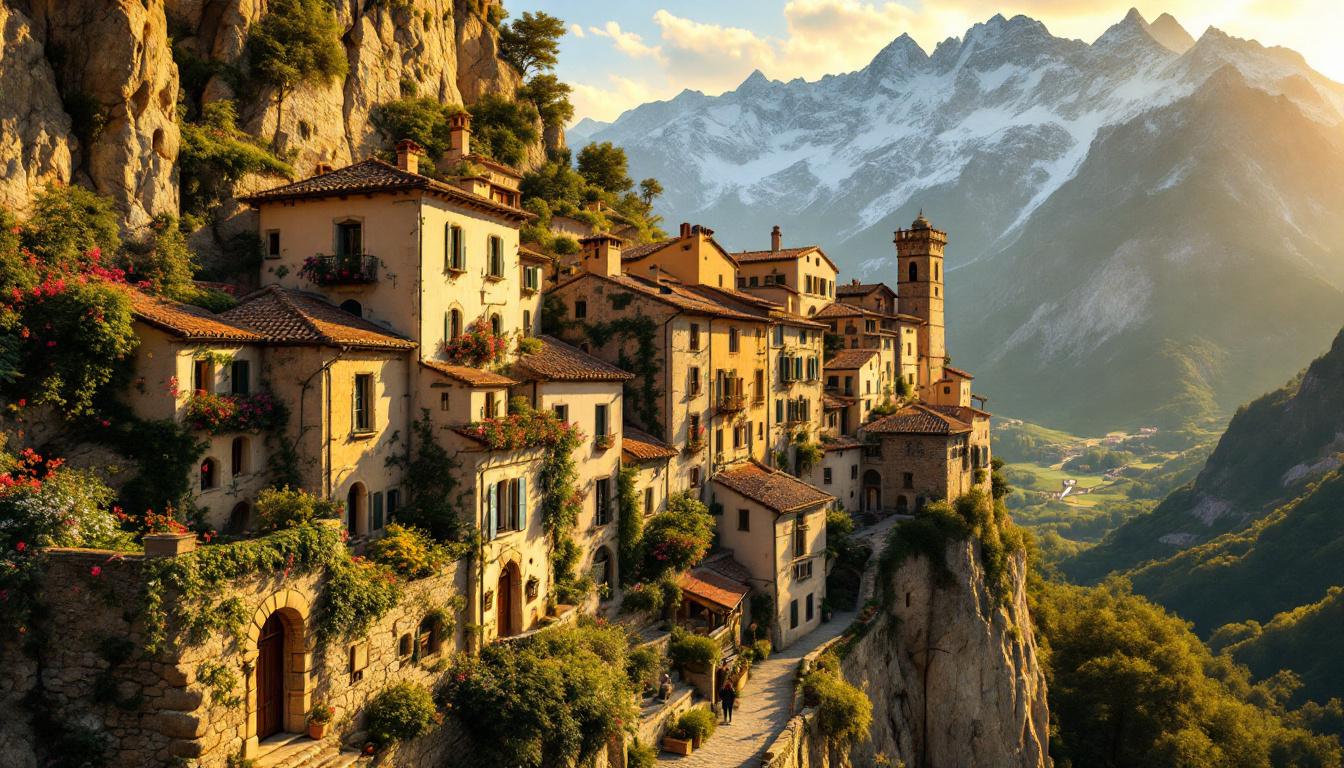France’s hidden Clairette vineyards cling precariously to rocky slopes surrounding Châtillon-en-Diois, making this medieval village one of the country’s highest wine-growing regions. This botanical paradise nestled at the foot of towering Glandasse Mountain (2,041m) offers what many travelers seek but rarely find: authentic Provençal life untouched by mass tourism.
A village where fountains recite poetry
Strolling through Châtillon’s labyrinthine “viols” (narrow medieval passageways), visitors discover 17 ancient fountains adorned with haiku poems. These stone water features don’t just provide refreshment—they tell stories of vineyard cycles and mountain seasons through carefully carved verses that change with the morning light.
“Our fountains speak the language of our landscape,” explains Marie Dufour, local historian. “When you read the poems while listening to the water, you understand our relationship with the mountains and vines that sustain us.”
Botanical trails reveal Mediterranean secrets
Unlike other medieval villages in Provence, Châtillon distinguishes itself with remarkable botanical diversity. The village maintains 150 species of climbing plants and flowers that cascade from ancient limestone walls, transforming ordinary streets into living gardens that change dramatically with each season.
Secret Protestant passages hidden in plain sight
Behind the 18th-century Protestant Temple lies the fascinating “Mur des Échappés” (Escape Wall), where subtle architectural anomalies reveal a history of religious resistance. Six horizontal stone bands interrupt the regular pattern—each once functioned as a pivoting escape route during Protestant persecutions.
Look for upside-down shutter gongs on windows—these silent signals once guided refugees to safety through the village’s intricate network of hidden passages.
Wine traditions older than the Roman Empire
The village’s original vine garden preserves pre-phylloxera Clairette grape specimens representing the genetic foundation of the region’s wine industry. These ancient, wild vines grow untrained, forming natural arches that showcase viticulture methods dating back centuries.
“Our vineyards tell the complete story of French winemaking—from wild vines to modern cultivation,” notes Vincent Rocher, fifth-generation winemaker. “But unlike other Mediterranean regions, our mountain climate creates wines with remarkable freshness.”
Where three steeples tell different stories
Châtillon’s skyline features three distinct steeples of graduated heights. The St. Julien Church showcases ornate design with stained glass in deep ruby and sapphire, while the Protestant Temple deliberately maintains plain architecture—a visual representation of historical religious tensions that shaped the village’s identity.
Festival Arts et Vigne transforms summer nights
Early August brings the Arts et Vigne Festival, when torch-lit musical evenings illuminate the village’s medieval corners. Unlike fortress towns with imposing walls, Châtillon welcomes visitors with intimate artistic experiences as village houses transform into galleries featuring regional artists.
Cirque d’Archiane: Nature’s perfect amphitheater
Just minutes from the village lies the dramatic Cirque d’Archiane, a horseshoe-shaped mountain formation that creates a natural amphitheater. Hiking trails lead from the village to panoramic viewpoints where golden eagles soar against limestone cliffs towering 1,700 feet overhead.
Unlike dramatic coastal cliffs, these mountains cradle a microclimate where Mediterranean flora meets Alpine species in surprising combinations.
Where to stay: Historic charm with modern comforts
Les Deux Mondes offers rooms in a meticulously restored medieval building, while nearby guesthouses provide authentic experiences for travelers seeking deeper connections to village life. Unlike larger medieval cities with standardized accommodations, Châtillon’s lodgings preserve architectural authenticity while providing modern comfort.
In Châtillon-en-Diois, centuries-old stone walls don’t just preserve history—they contain it within living communities still practicing traditions that predate tourism. Here, poetry flows through fountains, vines tell ancient stories, and every narrow viol leads to another discovery that most travelers will never find on standard French itineraries.
